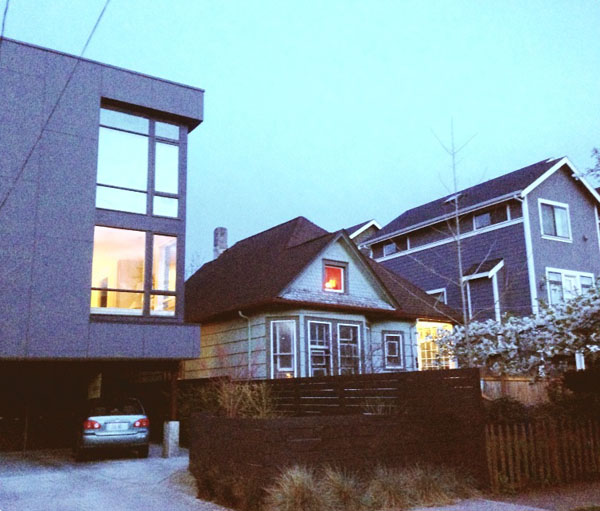More Evidence: Increased Housing Supply Leads to Lower Prices

The idea that increasing housing supply—building more housing units of all kinds—has a beneficial impact on housing price is still very controversial in Seattle. Intuitively, people know that when there is more of something for sale, the price of it naturally begins to fall. Even so, there is a stubborn view here that making more housing doesn’t have the same effect on housing price. But the fact is, when developers make decisions about when, what, and where to build, the studies they use are based on an analysis of housing supply and demand, and how those factors affect price.
I’ve written elsewhere about academic studies that found reducing or holding supply constant in the face of increased demand definitely results in higher prices.
Still, there is no way to do a side-by-side controlled study of supply and demand on two comparable cities. One can’t take a city and impose limits on supply and hold demand constant while in an adjacent city turn up supply with the same level of demand over five years, then analyze the data. The world can’t always be a laboratory, nor does it want to be.
However, each and every day real estate decisions worth thousands and even millions of dollars are made based on forecasts about housing supply and demand. Where do developers turn when they try to figure out what to build? With lots of money at stake they aren’t likely to just wing it, and even if they wanted to gamble, risk-averse banks and investors wouldn’t let them.
Developers and real estate people use data in studies done by agencies that analyze supply and demand. One local firm, Kidder Matthews, just released a top-line analysis of the apartment market in Seattle. What does their forecast say about housing supply and demand?
Vacancy rates generally have an inverse relationship with changes in rent; as vacancy rates increase the rate of rent growth generally decreases. Over the past twelve months the average regional rent on a per square foot basis increased from $1.21 to $1.28/s.f./month (5.8% increase) in tandem with vacancy falling by 90 basis points.
The basic assumption advisers and decision makers in real estate share is that when it comes to housing (apartments in this case), excess supply—empty units—means lower price. It’s also what real, local, actual, retrospective data show.
What’s the future look like for Seattle and the region for apartments?
Rental rates have returned to historic highs and use of concessions is minimal in most markets. In response, new development has ramped up with an estimated 8,277 new units expected during 2013. Currently, there are more than 13,301 units under construction and a total of 21,989 targeting 2013 and 2014 delivery. Although vacancy has remained at very low levels for the past two years, accelerating future apartment deliveries should begin to put upward pressure on the market vacancy.
When price goes up the financial incentives to develop housing go up too. More people want the product, the price is higher, and new producers want to get a piece of that business. Vacancy rates drop, prices go up, more suppliers enter the market, competition ensues, prices fall, suppliers hold back, prices go up, repeat. That’s how the cycle works, at least for people who put real money into housing.
Market studies are used by developers, lenders, and investors as a map to decide what to build and where and when to build it. How housing supply and demand affects price is not an academic exercise for them—it’s their financial future. Real estate studies based on supply and demand are not dactylomancy; these studies are the most conservative time-tested measure used by the real estate industry to invest and build.
As the economy in Seattle improves more jobs will be created, and with those jobs comes increased demand for housing. Development of more housing—of all kinds—we will positively impact price. It will. Whether we should relax regulation, incentivize new development, and encourage a variety of housing types isn’t debatable anymore—it is a mandate, especially if Seattle intends to sustainably welcome growth and economic recovery.
>>>
Roger Valdez is the director of Smart Growth Seattle, where this post originally appeared.

